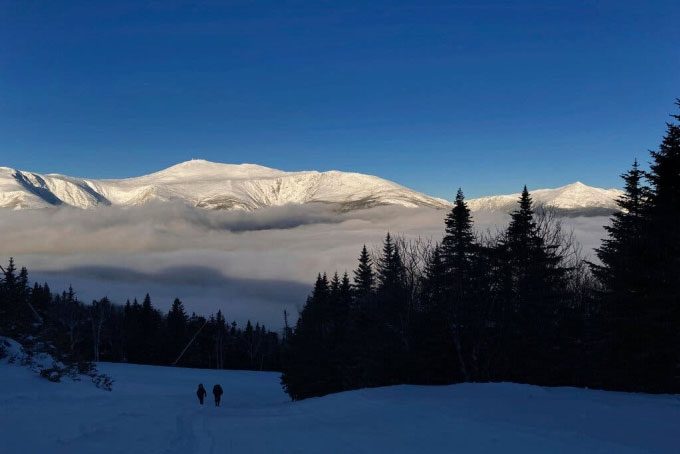Mount Washington in New Hampshire is renowned for having the worst weather in the world, characterized by strong winds, heavy rainfall, and freezing temperatures.
“Strong winds like storms occur about one-third of the days each year, with cold that is rarely seen anywhere else outside the Arctic, and the amount of rainfall is also incredibly high,” said science communicator Maiya May about Mount Washington, considered to have the worst weather in the world.

Mount Washington has extremely harsh weather. (Photo: Robert F. Bukaty/Associated Press).
The summit of this relatively small mountain held the record for the highest wind speed on the planet for over 60 years, with experts measuring a gust of 372 km/h in April 1934. Even in summer, when the winds are calmest, they still average about 40 km/h.
“Basically, we encounter wind speeds of 160 km/h about once a week in winter. Normally, a gust of 160 km/h is enough to knock me over, and I have seen winds reach up to 225 km/h,” said Tom Padham, a weather observer at Mount Washington.
Mount Washington is also very wet, with an average of over 2,286 mm of rain annually and more than 7,163 mm of snow, ice, and sleet. Here, fog persists about two-thirds of the time. The summit is also prone to direct lightning strikes.
The temperatures on the mountain are far from pleasant. Monthly average temperatures range from -14.4 degrees Celsius in January to 10 degrees Celsius in July. “Any exposed skin, even just one millimeter, feels like being stung by a bee or having a mild sunburn, so it’s definitely not comfortable here,” said weather observer Francis Tarasiewicz earlier this February. At the beginning of that month, due to a combination of 177 km/h winds and a cold snap from the Arctic, the Mount Washington Observatory set a new record for the coldest wind chill ever recorded in the U.S., reaching -78 degrees Celsius, with an actual temperature of -43 degrees Celsius.
The Mount Washington Observatory on February 3, 2023. (Video: NWS Cleveland)
Francis Tarasiewicz, an engineer at the Mount Washington Observatory, humorously remarked that much of the weather issues on this mountain are due to “luck.” The mountain’s unique conditions arise from a combination of factors such as elevation, geographical location, and latitude on Earth, all contributing to the weather being as bad as possible.
For instance, Mount Washington is situated almost halfway between the Arctic and the equator – right in the path of the jet stream. This stream receives energy from the collision of cold air from the north and warm air from the south. “At mid-latitudes, we frequently encounter many storms. But what makes the difference is that we are in a very humid atmosphere. Humidity leads to phenomena like instability,” Tarasiewicz explained.
The mountain’s isolation from the surrounding terrain exacerbates the situation. “This is the highest mountain within a 1,600 km radius, so of course, there aren’t many topographical factors to slow down the jet stream as it crosses the U.S. into New England,” Tarasiewicz added.
The frigid winds are further intensified by the Venturi effect. Specifically, Mount Washington is not only on the path of the jet stream but also located within a massive natural funnel that helps compress and accelerate the airflow above and around the summit.


















































